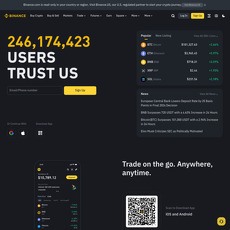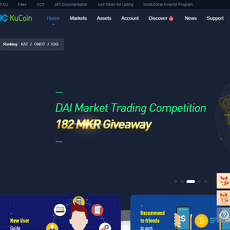Poloniex Review
Poloniex
poloniex.com
Poloniex Review
When it comes to crypto trading, several factors can boost your profitability. One of them is the quality of the trading tools at your disposal. This is why we have created a comprehensive review section focusing on the crypto exchange sector and the top platforms operating in it. In this guide, we will be narrowing our focus on the Seychelle-based Poloniex.
Considered one of the most popular exchanges globally, the exchange has had to evolve to keep up with the fast-paced crypto industry. Here, we will explore the workings of Poloniex and highlight its pros and cons.
Poloniex Overview
Poloniex is a crypto-to-crypto exchange established in 2014. It is one of the more difficult exchanges to use and was acquired by payment processor Circle in February 2018. The exchange offers a wide variety of crypto-to-crypto trading. There are currently over 170 cryptocurrencies available to be traded against Bitcoin, Tron, and stablecoins. Poloniex also allows users to trade against Monero and USD Tether. It is one of the few exchanges that offer such a feature.
Margin trading is also available for traders. The funds for margin traders are provided by other users who lend their funds for a small return. The lending aspect is one of the features which has made this exchange popular. Loans typically have a duration of two days but when annualized, they tend to generate double-digit returns. It supports multiple bot services, which automatically renew loan offers and search for attractive rates. Users can also enable two-factor authentication to add an extra layer of security to the account.
In addition to spot and margin trading, users can also trade futures. There are no fees charged by Poloniex for deposits or withdrawals. Nonetheless, withdrawals are subject to the typical blockchain mining fee. Overall, Poloniex is an important exchange in the cryptocurrency ecosystem but is not the ideal option for beginners. Understandably, cryptocurrency users with more experience will try out this exchange because of its lending feature and a wide variety of cryptocurrencies.
Recently, Poloniex has implemented significant changes in its policies and architecture to attract new customers and emerge as a major player in the international market. This dynamic shift in its operation has provided users with privacy-focused services and an aesthetically pleasing trading terminal. In the next section, we will explore the history and background of Poloniex and explain how these changes came to be.
The history and background of Poloniex
In January 2014, Tristan D’Agosta launched Poloniex in Delaware, USA. Shortly after the launch, the exchange suffered a major security breach and lost 12% of its Bitcoin holdings worth $50,000 at the time. Following the hack, the company opted to reimburse affected users with D’Agosta’s company profit, a move that showcased the competence and commitment of the management team.
After this shaky start, Poloniex began to attract users in their numbers as a result of its strategic approach to crypto listings. For instance, Poloniex was the first exchange to support Ethereum in 2016. Such milestones helped the exchange attract more traders and emerge as a high liquidity trading platform.
Then in 2018, there was a change in management as Circle purchased Poloniex with the intention of transforming the platform into the first fully regulated crypto exchange in the USA. In line with this goal, Poloniex delisted nearly 50% of its supported crypto assets, especially those that might be classified as securities under existing laws. This remodeling also forced Poloniex to adopt strict KYC requirements.
Down the line, Circle claimed that it had inherited a backlog of 140,000 outstanding customer tickets. According to a blog post published in 2019, the lackluster nature of the exchange’s customer support negatively impacted growth.
In 2019, Poloniex took another dent to its already feeble reputation following the events leading to the ClAM crash and the exchange’s decision to socialize the resulting losses. In the same year, Circle decided to reshuffle and make Poloniex a separate entity with the parent company called Polo Digital Assets LTD. Backed by a group of Asian investors including Justin Tron, founder of Tron, this new company moved its headquarter to Seychelles. This move marked a sharp turnaround for Poloniex and its regulatory stance.
By moving to a crypto-friendly jurisdiction, Poloniex no longer forced KYC requirements on users. Starting from 2020, it became optional to undergo the platform’s identity verification processes. The exchange also had to stop providing services to users located in the United States. In 2021, Poloniex optimized its interfaces across its website and mobile apps to improve user experience.
Supported countries
The exchange is available globally. However, as a result of regulatory restrictions among other reasons, the exchange does not offer its services to residents and citizens of Cuba, North Korea, the United States, Iran, Sudan, and Syria.
KYC requirements and VIP accounts on Poloniex
As discussed earlier, KYC is optional on Poloniex. The exchange uses a 2 account verification status. Poloniex classifies those that submit valid email addresses alone for account verification as Level 1 users. Level 2 users are those that have gone a step further to scale KYC requirements.
It is worth mentioning that Level 2 users have a daily withdrawal limit of up to $750,000 while Level 1 users are limited to $20,000 daily. Also, large-volume traders, financial institutions, and market makers can open Poloniex’s silver, gold, and market maker accounts. The platform’s VIP accounts have access to lower fees, premium customer support, higher withdrawal limits, and so on.
Poloniex fees
Poloniex deducts a 0.125% fee on both the maker and the taker side when your 30-day trading volume is less than $50,000. This drops to 0.095% when you have over $49 worth of TRON in your wallet. Depending on your monthly volume, the maker fee is between the range of 0% to 0.125% while the taker fee has a range of 0.06% to 0.125%. The exchange incentivizes its gold and silver account holders with a 0% maker fee.
This fee schedule is also applicable to margin traders. For its futures market, the exchange charges a fixed 0.01% as maker fees and 0.075% on the taker side. Lenders pay 15% of the interest generated as fees to Poloniex.
Deposit and Withdrawals
Poloniex does not support fiat withdrawals or deposits. However, thanks to its integration with SImplex, you can use your credit or debit cards to buy cryptocurrencies. This comes with a flat fee of $10 or 3.5% of your transaction amount. With Simplex, you can buy as much as $20,000 worth of coins daily and $50,000 monthly.
In contrast, Poloniex does not charge additional fees for crypto deposits and withdrawals. The exchange only deducts the amount required to broadcast the transaction on the appropriate blockchain network.
What about the trading terminal?
Poloniex is well suited to experienced traders. Also, the ongoing revamp of the exchange’s interfaces has brought a lot of improvements to the trading experience. The Platform’s chart is powered by TradingView. Hence, it is customizable and comes with a variety of useful trading tools. Also, while trading, you can interact live with other traders on the Platform’s Trollbox.
Security
In the past Poloniex has been faulted for its security architecture and risk management practice. However, it is worth noting that since the unfortunate incident in 2014, the exchange has not been found wanting security-wise. This is due to the implementation of a combination of security infrastructures and solutions including, 2FA, registry lock, cold wallets, and so on. However, since Poloniex is not heavily regulated, it is advisable to not use the exchange’s wallet as a long-term crypto storage solution.
Customer support
Although Poloniex has improved its approach to customer support, more still needs to be done in this regard. At the time of writing, you can reach Poloniex via a support ticket system, the Trollbox, and on social media. The fastest way to receive a response is to chat directly with moderators on Trollbox. There is also an extensive FAQ section detailing solutions to frequently encountered problems.
What are the pros and cons of Poloniex
Pros of Poloniex
Poloniex is ideal for privacy-focused traders
Ever since it moved its headquarters to Seychelles, Poloniex has become more flexible in matters relating to KYC. You can start trading by just submitting a valid email address. This will surely interest privacy-conscious users.
It has one of the lowest fees in the industry
Compared to other internationally-renowned exchanges, Poloniex fees are relatively low. Low-volume traders can reduce their fees by holding as little as $50 worth of TRON.
Poloniex offers an interactive trading terminal
Traders have access to a live chatting system where experience and sentiments can be shared. The interactive nature of this exchange improves the trading experience of traders.
It supports a wide variety of coins
With 90 coins and 320 pairs available for trading, Poloniex has managed to enable a robust trading infrastructure suitable for altcoin traders.
It offers margin trading and crypto futures
Poloniex is not just limiting its operations to spot trading alone. The exchange also provides tools required to margin trade cryptocurrencies. Besides, it functions as a crypto futures exchange.
It has mobile apps for iOS and Android
Poloniex has enabled a mobile-friendly ecosystem by launching mobile apps for iOS and Android devices. With this, traders can execute trades and other activities on the go.
Cons of Poloniex
Poloniex is loosely regulated
Poloniex can preserve the privacy of users because it is no longer regulated by strict frameworks. Hence, you might have to be wary of risks associated with loosely regulated exchanges when using Poloniex.
It only supports crypto deposits and withdrawals
Considering the lack of a wide array of fiat payment rails, users may have to deposit cryptocurrencies to start trading on Poloniex. The only other option is the cost-ineffective SImplex integration that lets users buy bitcoin and selected altcoins with credit/debit cards. On the withdrawal side, users can only process transactions with supported crypto networks. These limitations show that Poloniex is not the best pick for newbies.
For more in-depth reviews and comparisons of top crypto platforms like Poloniex, visit CryptoLinks.com to explore the best exchanges, wallets, and tools in the cryptocurrency space.













